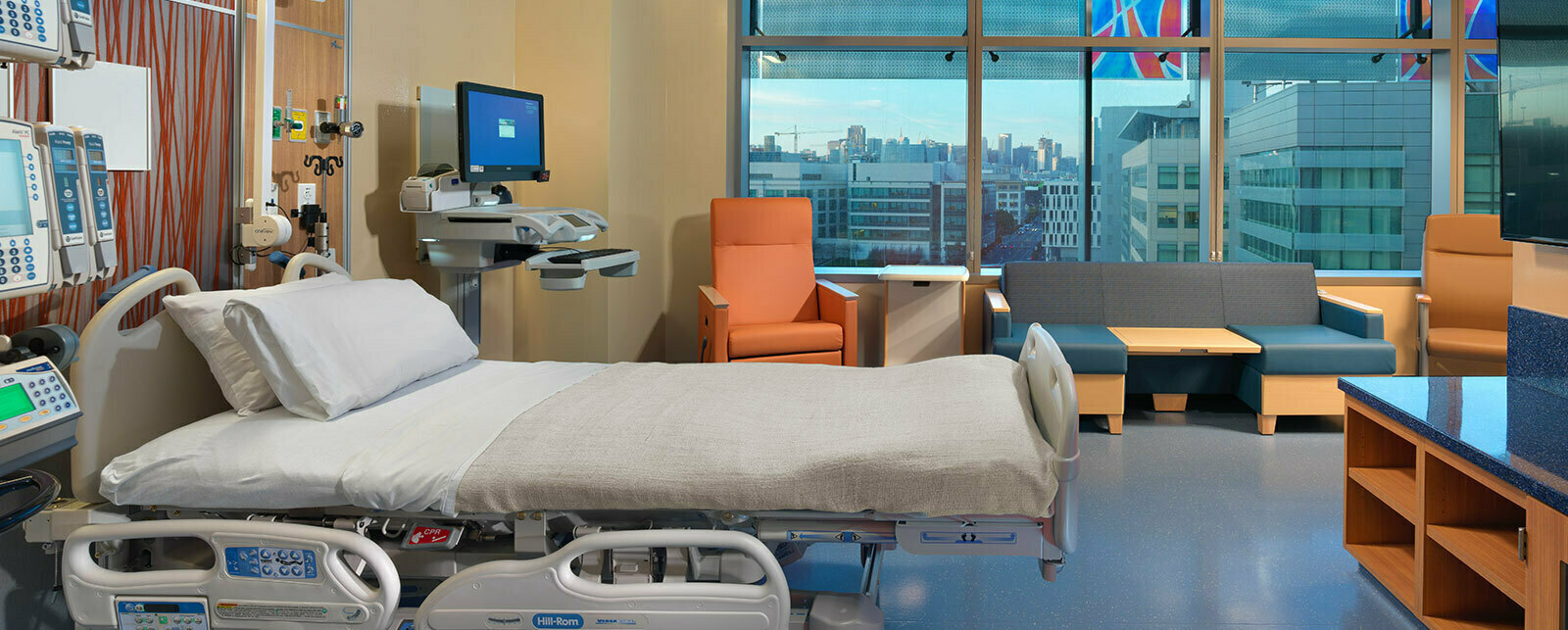

All of us who have been through hospital stays, as patients or caregivers, are bound to have a story or two to share – and usually not great ones. Mostly, not even good stories. Hospital visits represent some of the most challenging experiences for patients and their families. And while there’s no one-size-fits all solution to improving it, looking at the challenge through a design lens uncovers small details that, when added up, greatly impact both comfort and satisfaction.
Recognizing the significance of the hospital experience, The Centers for Medicare & Medicaid Services (CMS) partnered with the Agency for Healthcare Research and Quality (AHRQ), another agency in the federal Department of Health and Human Services, to develop HCAHPS. (pronounced “H-Caps”), a national standard survey to collect and publicly share patient satisfaction on hospital care. Hospitals receive monetary incentives for high HCAHPS scores and are penalized for low performance. HCAHPS serves as a significant barometer for measuring patient experiences. And while often overlooked, design can play a large part in improving them.
Recently, our One Workplace Healthcare Team had an HCAHPS learning session with Misti Yeager from Ghent Healthcare. From solving old challenges to uncovering new opportunities, here are a few key considerations and takeaways they identified for healthcare designers looking to improve the patient experience.
Improved Scores by Design
Provider communication – or lack thereof – is a leading contributor to hospital re-admissions. A simple HCAHPS question like "During this hospital stay, how often did nurses explain things in a way you could understand?” points out the importance of clear and focused communications. In fact, poor communication accounts for 25% of readmissions. Additionally, HCAHPS scores are significantly impacted by patient physical comfort. Room layout, equipment, lighting, and other variables contribute to a better overall experience.
By dividing the standard patient room into three zones that work together while serving separate needs, designers can potentially raise HCAHPS scores by tackling both communication and comfort.
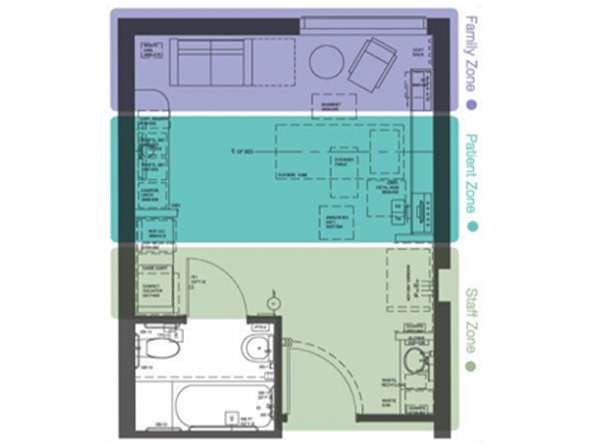
Family Zone
Family plays a critical role in reducing stress, promoting healing, and lowering patient readmission rates. A dedicated, intentional, and comfortable family space invites families into the room, encourages their participation, and promotes patient comfort.
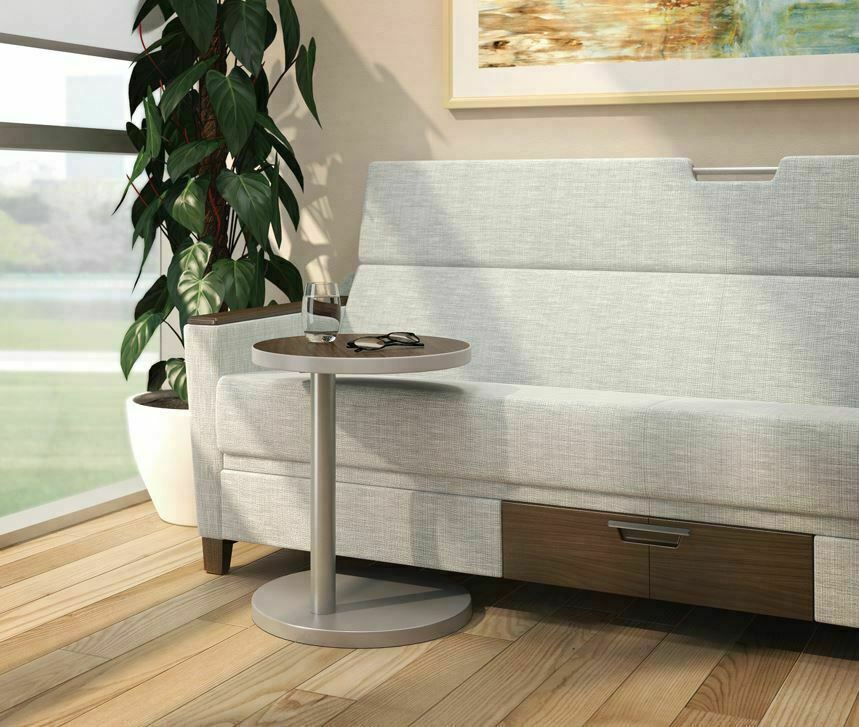
Patient Zone
Patients take center stage in healthcare. Empowering them to take some control of the experience – from ordering meals to understanding their discharge date – improves both comfort and communication. To keep patients well informed, equip hospital rooms with easy-to-clean, customizable white boards for communicating up-to-date care information. These simple solutions can lead to a better understanding of care plans, ease anxiety, reduce inquiries and staff calls, and minimize treatment errors.
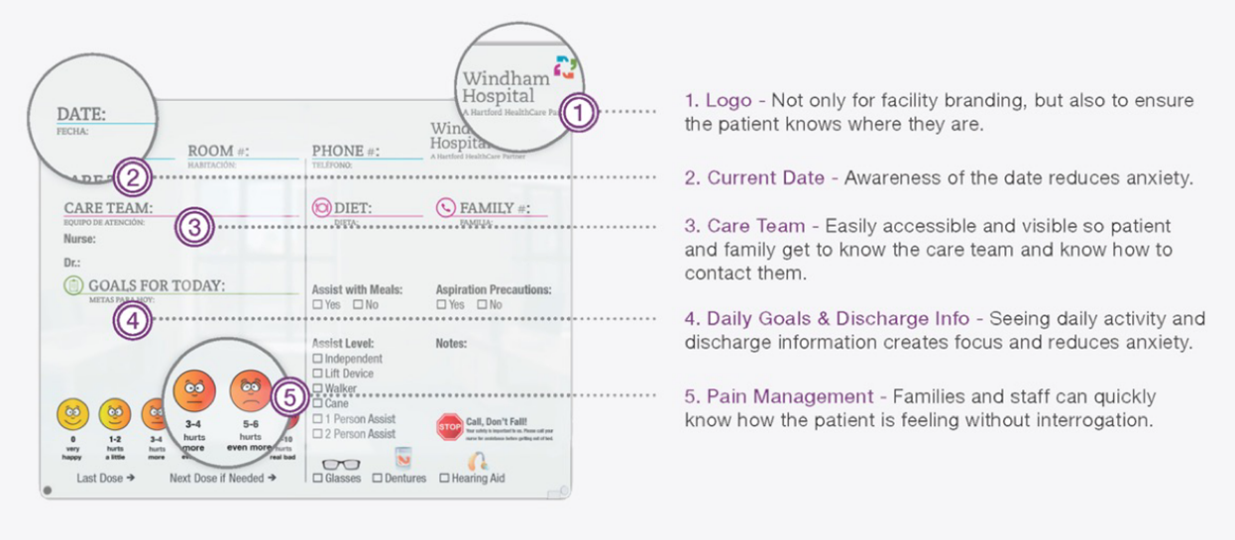
Clinical/Staff Zone
Constant interruptions, hallway noises, and provider check-ins often make patient rooms anything but restful. They can be high traffic, noisy areas so reducing both noise and movement or deflecting it away from patients and their families can be helpful. Harmonizing a single environment to accommodate both work and healing needs is a challenge, but designating a zone distinct from the patient area is a good start. Designers should also look towards lighting solutions to help. By varying lighting by staff zone (work), patient zone (healing), and family zone (respite), rooms can serve multiple purposes while giving patients the rest they need and doctors and nurses ample space to work in.
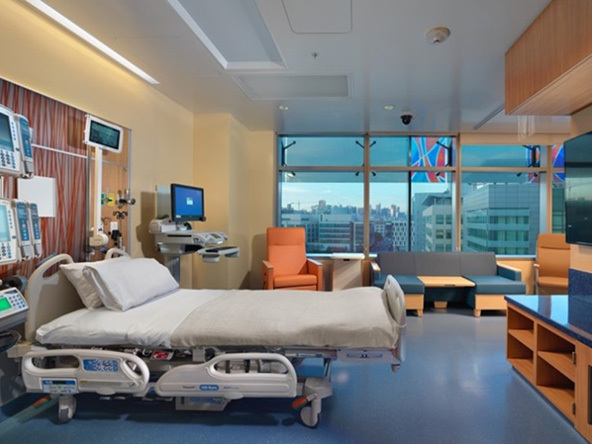
Better Patient Experience and Provider Wellness
Patients who feel considered, informed and in control of their care are less likely to rely on hospital staff every minute of the day, minimizing staff stress. They’re also less likely to return to the hospital based on poor communication. Likewise, patients who feel rested and more at ease during their stay will have an improved overall experience.
By bringing different zones together and examining the different types of work and needs that each environment should support, designers can help hospitals develop better patient outcomes and higher HCAHPs scores. They can also contribute to a better healing experience in the process, and that’s a win-win by any definition.
Contact our healthcare experts for design and furnishing solutions to help improve your HCAHPS scores, customizable to meet your hospital's needs.